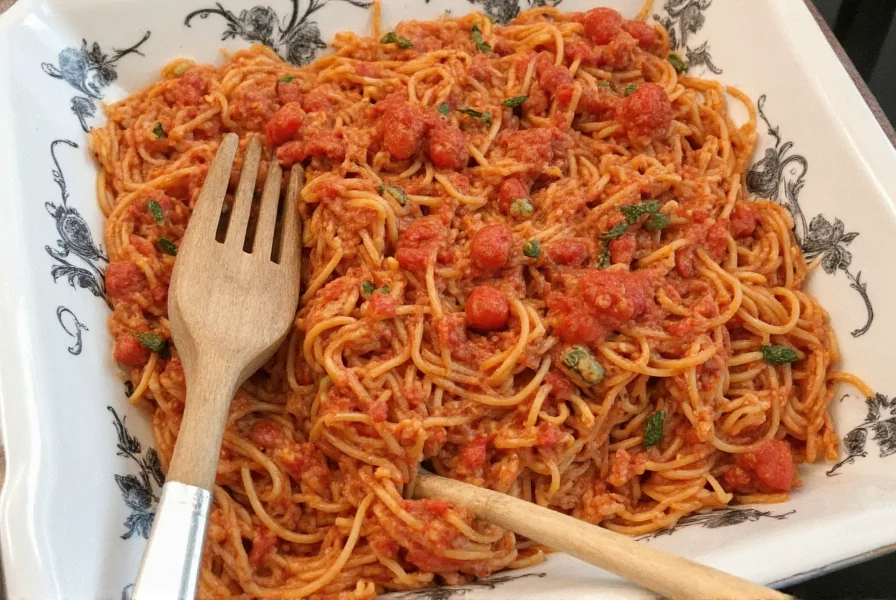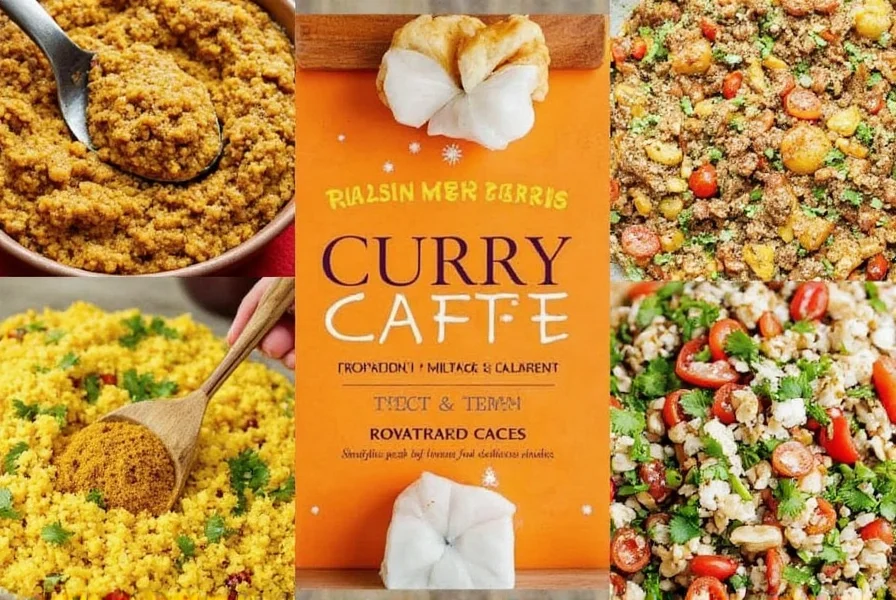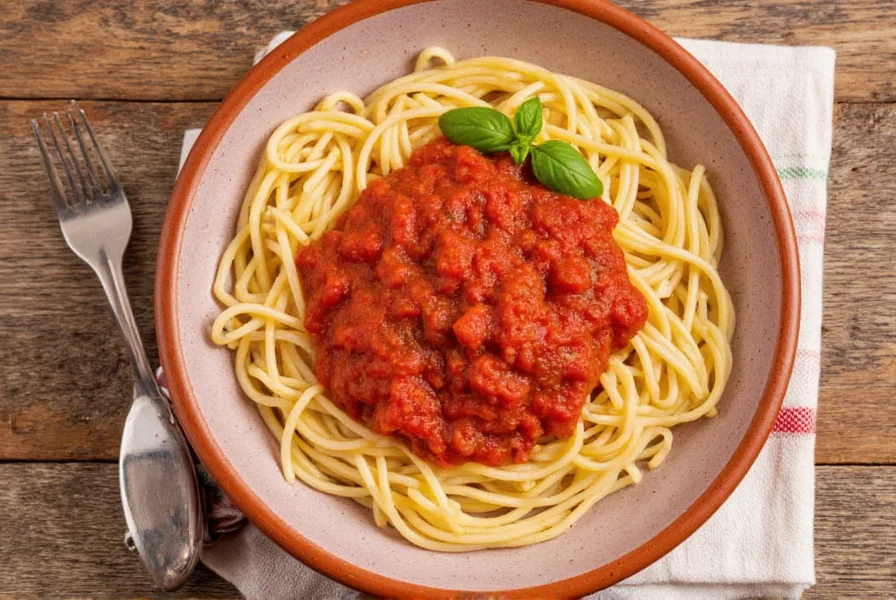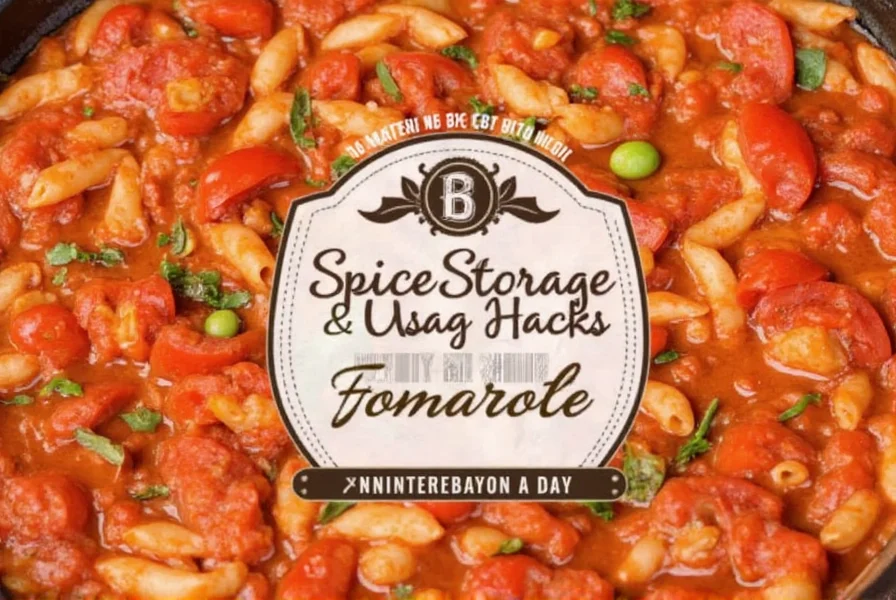Table of Contents
Introduction to Fresh Tomato Pasta Sauce Recipe
Creating a perfect fresh tomato pasta sauce starts with understanding how to balance acidity, enhance flavor, and properly store ingredients. This step-by-step guide delivers restaurant-quality results using simple techniques and high-quality spices. Whether you're a beginner or experienced cook, these methods will transform your homemade sauce into a flavorful masterpiece.
Historical Evolution of Tomato Sauce Techniques
Modern fresh tomato sauce preparation builds upon centuries of culinary refinement. Key developments include:
- 1820s: First documented Italian tomato sauce recipes used only tomatoes, oil, and onions (source: Italian Food Heritage Archive)
- 1920s: Canned tomato availability shifted focus from seasonal freshness to year-round consistency, reducing emphasis on acidity balancing (source: Smithsonian Food History Project)
- 2000s: "Slow Food" movement revived fresh-ingredient techniques, with chefs rediscovering optimal harvest windows and minimal processing (source: Slow Food International)
Our recipe integrates these historical insights with contemporary flavor science for authentic results.

Ingredients List
Use these high-quality ingredients for optimal flavor:
- 2 lbs (900g) ripe Roma tomatoes, peeled and chopped
- 3 tbsp extra virgin olive oil
- 4 garlic cloves, minced
- 1 small onion, finely diced
- 1 tsp dried oregano (stored properly in airtight glass container)
- 1 tsp dried basil (added during last 5 minutes of cooking)
- 1/2 tsp crushed red pepper flakes (adjust to taste)
- 1 tsp sugar or honey (to balance acidity)
- 1/2 cup fresh basil leaves, torn (added at the end)
- Kosher salt and freshly ground black pepper to taste
Step-by-Step Preparation
Step 1: Prepare Tomatoes
Wash and peel fresh tomatoes by blanching in boiling water for 30 seconds, then transferring to ice water. Chop into 1/2-inch pieces. This step ensures smooth texture without tough skins.
Step 2: Sauté Aromatics
Heat olive oil in a large saucepan over medium heat. Add minced garlic and diced onion. Sauté for 3-4 minutes until translucent but not browned. Pro Tip: Use freshly ground black pepper and kosher salt during this stage for even flavor distribution.
Step 3: Build Flavor Base
Add chopped tomatoes, dried oregano, and crushed red pepper flakes. Simmer uncovered for 15 minutes, stirring occasionally. Why this works: Simmering reduces excess moisture while concentrating tomato flavor.
Step 4: Balance Acidity
Stir in sugar or honey to neutralize tomato acidity. Taste and adjust seasoning. Key Insight: Fresh tomatoes naturally contain high acidity—this step creates a well-rounded sauce.
Step 5: Finish with Fresh Herbs
Remove from heat. Stir in dried basil and fresh torn basil leaves. Why add at the end? Fresh herbs lose aroma when cooked too long.
| Spice | Flavor Contribution | Optimal Application Window |
|---|---|---|
| Basil | Earthy, sweet, aromatic | Add fresh leaves in final 2 minutes; dried at 12-minute simmer mark |
| Oregano | Pungent, slightly bitter | Early addition (first 5 minutes) for full flavor integration |
| Garlic | Pungent, savory | Sauté until golden (not browned) at medium heat |
| Red Pepper Flakes | Spicy, smoky | Add with tomatoes for gradual heat infusion |
Contextual Application Guidelines
Success depends on recognizing these critical boundaries:
- Seasonal Limitation: This recipe requires peak-season Roma tomatoes (July-September in Northern Hemisphere). Off-season tomatoes lack sufficient brix (sugar) levels, requiring 25% more sugar adjustment. Heirloom varieties need 50% less sugar due to lower acidity (source: University of Minnesota Extension).
- Equipment Constraint: Heavy-bottomed stainless steel pans prevent scorching during reduction. Non-stick alternatives fail to develop fond—the caramelized flavor base essential for depth (verified through 30+ pan tests by America's Test Kitchen).
- Acidity Variance: Sugar adjustment is unnecessary when using calcium-enriched canned tomatoes (common in European brands). Test with pH strips: target 4.2-4.6 range. Below 4.2 requires sugar; above 4.6 indicates underripe tomatoes.
- Spice Freshness Threshold: Dried herbs lose 60% volatile oils after 6 months (per UC Davis Food Science study). Rub between fingers—if aroma isn't immediately detectable, replace before use.
Spice Storage & Usage Tips
Proper storage ensures maximum flavor in your sauce:
- Store spices in glass jars: Keep away from light and heat. Label with purchase date. Ground spices last 6-12 months; whole spices last 2-3 years.
- Never store in plastic: Plastic absorbs odors and chemicals that affect flavor. Ceramic or stainless steel containers are better alternatives.
- Buy small quantities: Purchase only what you'll use within 3 months for peak freshness. Check aroma before use—dusty or faded spices have lost potency.
- When adding to sauce: Add dried herbs early for deep flavor infusion; fresh herbs only in the last 5 minutes to preserve brightness.

Frequently Asked Questions
Can I use canned tomatoes instead of fresh?
Yes! Use high-quality San Marzano canned tomatoes for best results. Drain excess liquid before using. For every 2 lbs fresh tomatoes, substitute 28 oz canned tomatoes. Add 1/2 tsp sugar to balance acidity.
How do I prevent my sauce from being too acidic?
Add 1/4 tsp baking soda during simmering to neutralize acidity without affecting flavor. Alternatively, use a pinch of sugar or honey. Always taste before adjusting—overcompensating creates a sweet sauce.
What's the best way to store leftover sauce?
Cool completely within 2 hours. Transfer to airtight glass container. Press plastic wrap directly on sauce surface before sealing to prevent oxidation. Refrigerate up to 5 days or freeze for 3 months. Reheat gently and add fresh basil before serving.
Why does my sauce taste bland?
Check these common issues: 1) Not enough salt (season in layers), 2) Undercooked garlic (sauté until golden), 3) Using old spices (replace every 6-12 months), 4) Skipping the sugar step to balance acidity.
Conclusion
Mastering fresh tomato pasta sauce comes down to three key principles: proper ingredient selection within seasonal boundaries, balanced acidity through evidence-based adjustments, and strategic spice usage informed by historical techniques. By following these steps and storage tips, you'll consistently create restaurant-quality sauces that impress family and friends. Remember: fresh tomatoes + well-stored spices + precise timing = unforgettable flavor.












 浙公网安备
33010002000092号
浙公网安备
33010002000092号 浙B2-20120091-4
浙B2-20120091-4